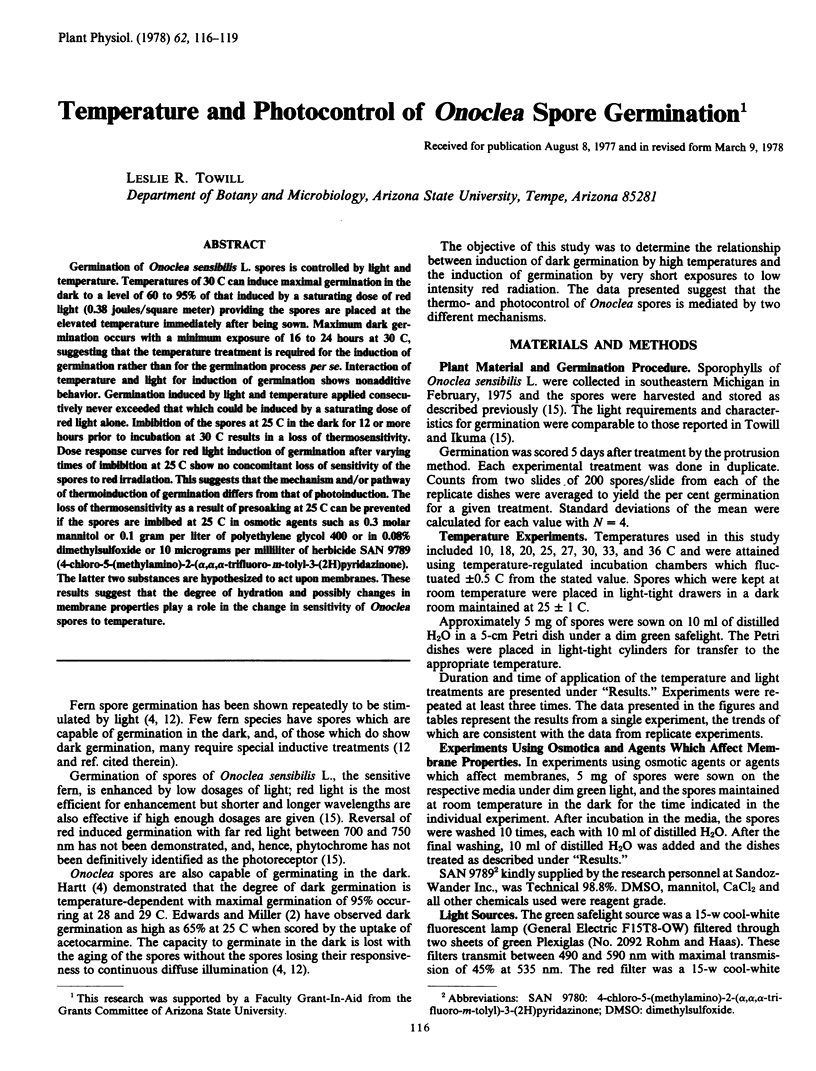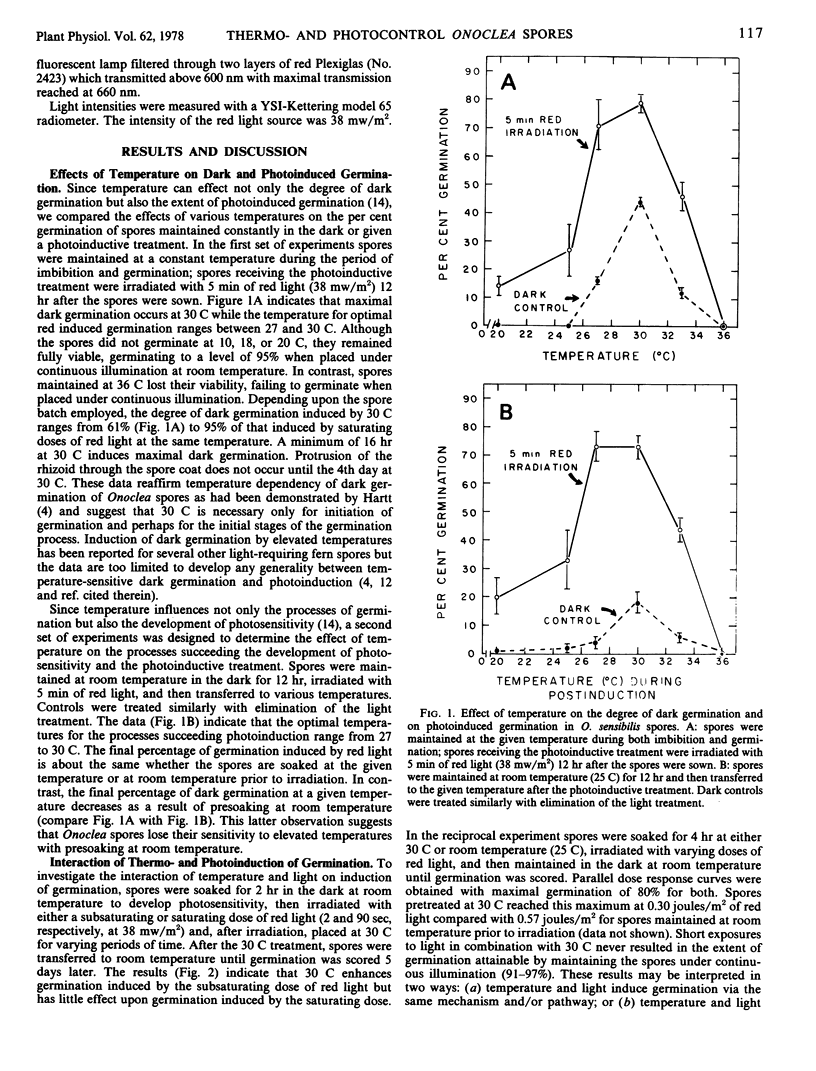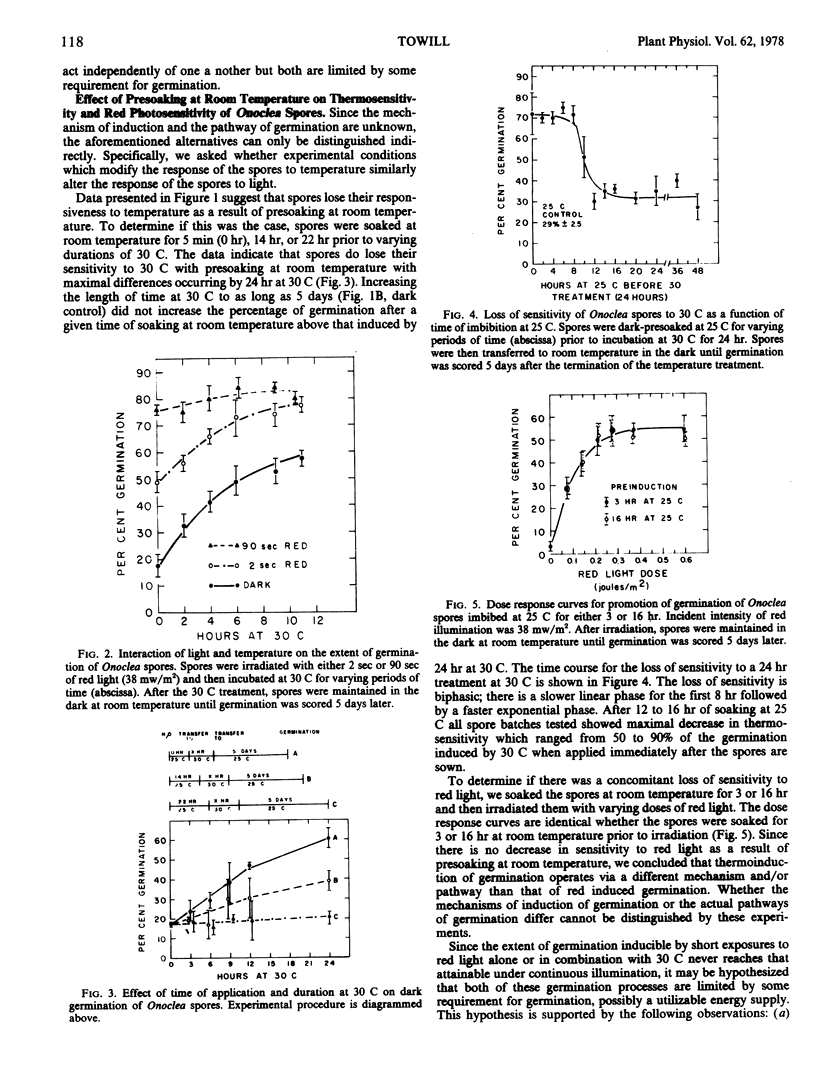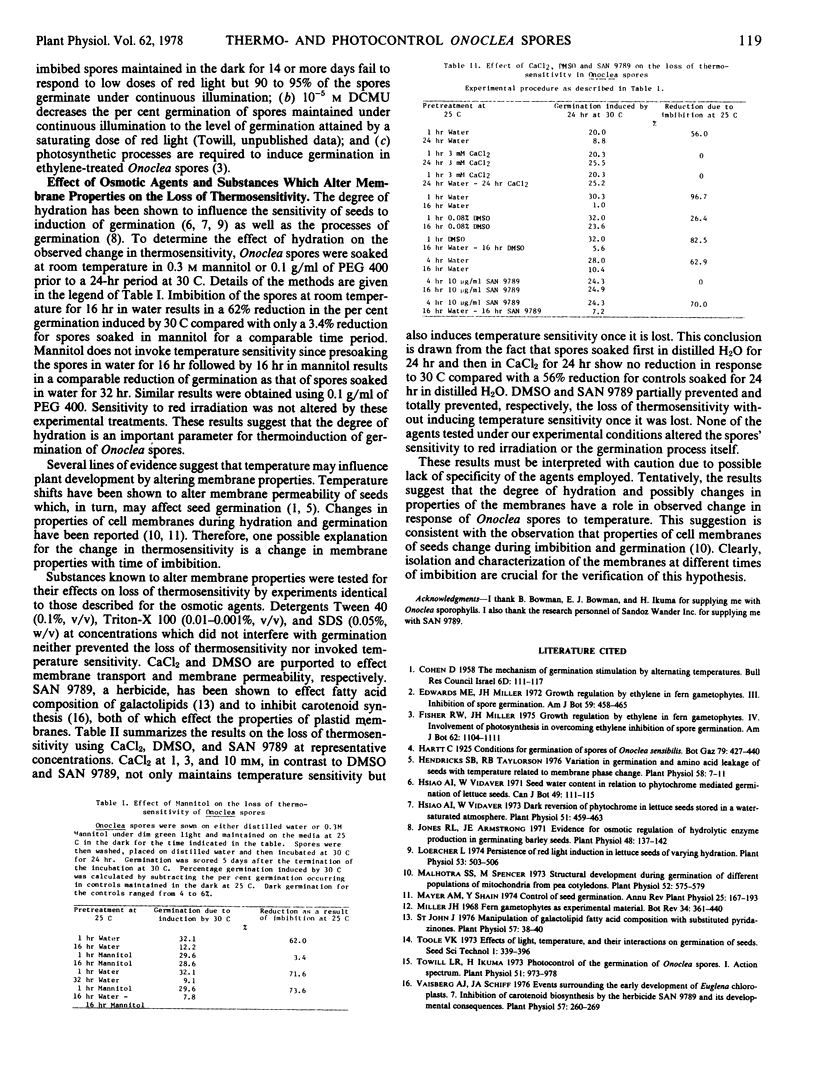Abstract
Germination of Onoclea sensibilis L. spores is controlled by light and temperature. Temperatures of 30 C can induce maximal germination in the dark to a level of 60 to 95% of that induced by a saturating dose of red light (0.38 joules/square meter) providing the spores are placed at the elevated temperature immediately after being sown. Maximum dark germination occurs with a minimum exposure of 16 to 24 hours at 30 C, suggesting that the temperature treatment is required for the induction of germination rather than for the germination process per se. Interaction of temperature and light for induction of germination shows nonadditive behavior. Germination induced by light and temperature applied consecutively never exceeded that which could be induced by a saturating dose of red light alone. Imbibition of the spores at 25 C in the dark for 12 or more hours prior to incubation at 30 C results in a loss of thermosensitivity. Dose response curves for red light induction of germination after varying times of imbibition at 25 C show no concomitant loss of sensitivity of the spores to red irradiation. This suggests that the mechanism and/or pathway of thermoinduction of germination differs from that of photoinduction. The loss of thermosensitivity as a result of presoaking at 25 C can be prevented if the spores are imbibed at 25 C in osmotic agents such as 0.3 molar mannitol or 0.1 gram per liter of polyethylene glycol 400 or in 0.08% dimethylsulfoxide or 10 micrograms per milliliter of herbicide SAN 9789 (4-chloro-5-(methylamino)-2-(α,α,α-trifluoro-m-tolyl-3-(2H)pyridazinone). The latter two substances are hypothesized to act upon membranes. These results suggest that the degree of hydration and possibly changes in membrane properties play a role in the change in sensitivity of Onoclea spores to temperature.
Full text
PDF



Selected References
These references are in PubMed. This may not be the complete list of references from this article.
- Hendricks S. B., Taylorson R. B. Variation in germination and amino Acid leakage of seeds with temperature related to membrane phase change. Plant Physiol. 1976 Jul;58(1):7–11. doi: 10.1104/pp.58.1.7. [DOI] [PMC free article] [PubMed] [Google Scholar]
- Hsiao A. I., Vidaver W. Dark Reversion of Phytochrome in Lettuce Seeds Stored in a Water-saturated Atmosphere. Plant Physiol. 1973 Mar;51(3):459–463. doi: 10.1104/pp.51.3.459. [DOI] [PMC free article] [PubMed] [Google Scholar]
- John J. B. Manipulation of galactolipid Fatty Acid composition with substituted pyridazinones. Plant Physiol. 1976 Jan;57(1):38–40. doi: 10.1104/pp.57.1.38. [DOI] [PMC free article] [PubMed] [Google Scholar]
- Jones R. L., Armstrong J. E. Evidence for osmotic regulation of hydrolytic enzyme production in germinating barley seeds. Plant Physiol. 1971 Aug;48(2):137–142. doi: 10.1104/pp.48.2.137. [DOI] [PMC free article] [PubMed] [Google Scholar]
- Loercher L. Persistence of red light induction in lettuce seeds of varying hydration. Plant Physiol. 1974 Mar;53(3):503–506. doi: 10.1104/pp.53.3.503. [DOI] [PMC free article] [PubMed] [Google Scholar]
- Malhotra S. S., Spencer M. Structural Development during Germination of Different Populations of Mitochondria from Pea Cotyledons. Plant Physiol. 1973 Dec;52(6):575–579. doi: 10.1104/pp.52.6.575. [DOI] [PMC free article] [PubMed] [Google Scholar]
- Towill L. R., Ikuma H. Photocontrol of the germination of onoclea spores: I. Action spectrum. Plant Physiol. 1973 May;51(5):973–978. doi: 10.1104/pp.51.5.973. [DOI] [PMC free article] [PubMed] [Google Scholar]
- Vaisberg A. J., Schiff J. A. Events Surrounding the Early Development of Euglena Chloroplasts: 7. Inhibition of Carotenoid Biosynthesis by the Herbicide SAN 9789 (4-Chloro-5-(methylamino)-2-(alpha,alpha,alpha,-trifluoro-m-tolyl)-3-(2H)pyridazinone) and Its Developmental Consequences. Plant Physiol. 1976 Feb;57(2):260–269. doi: 10.1104/pp.57.2.260. [DOI] [PMC free article] [PubMed] [Google Scholar]


